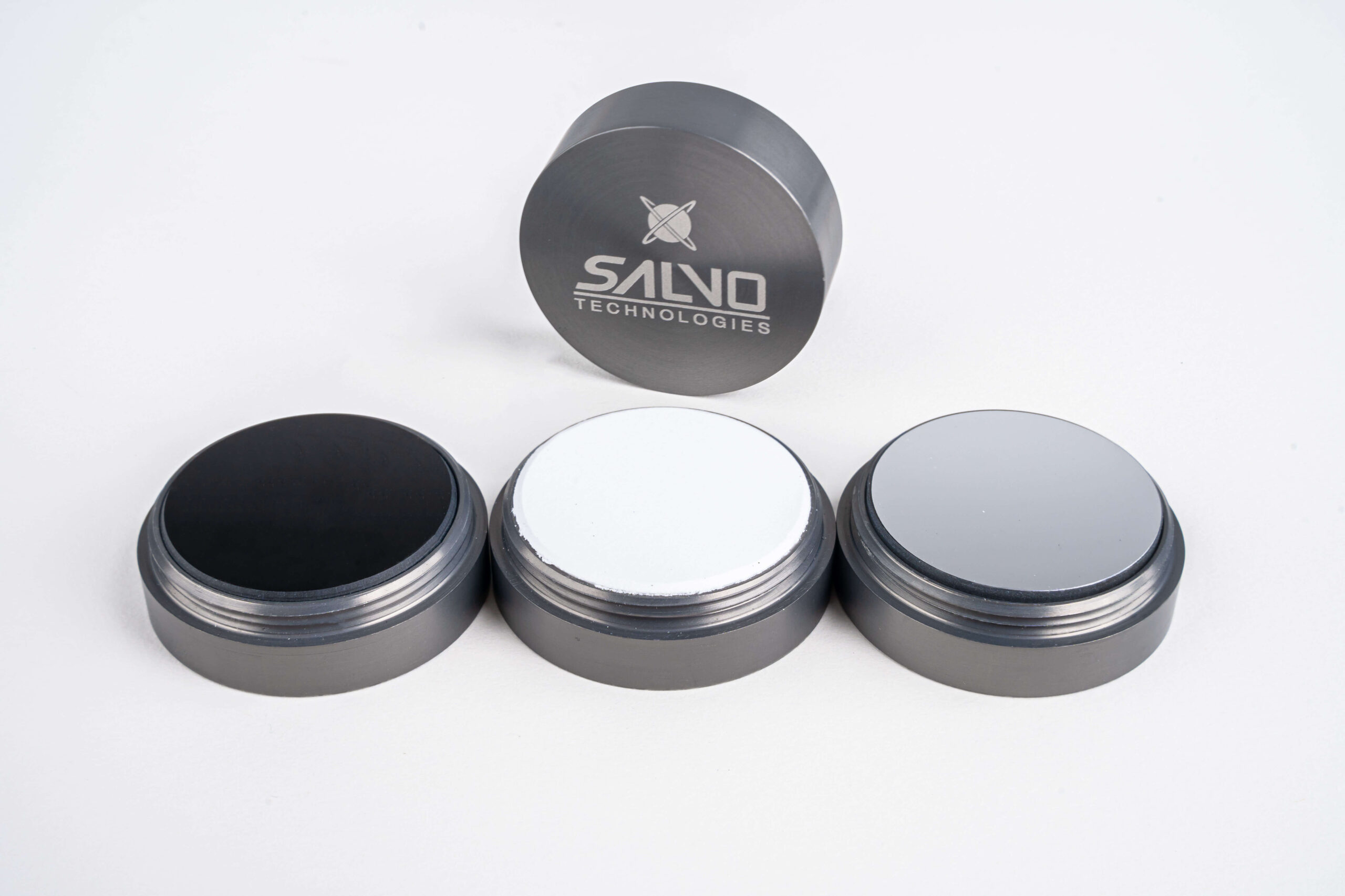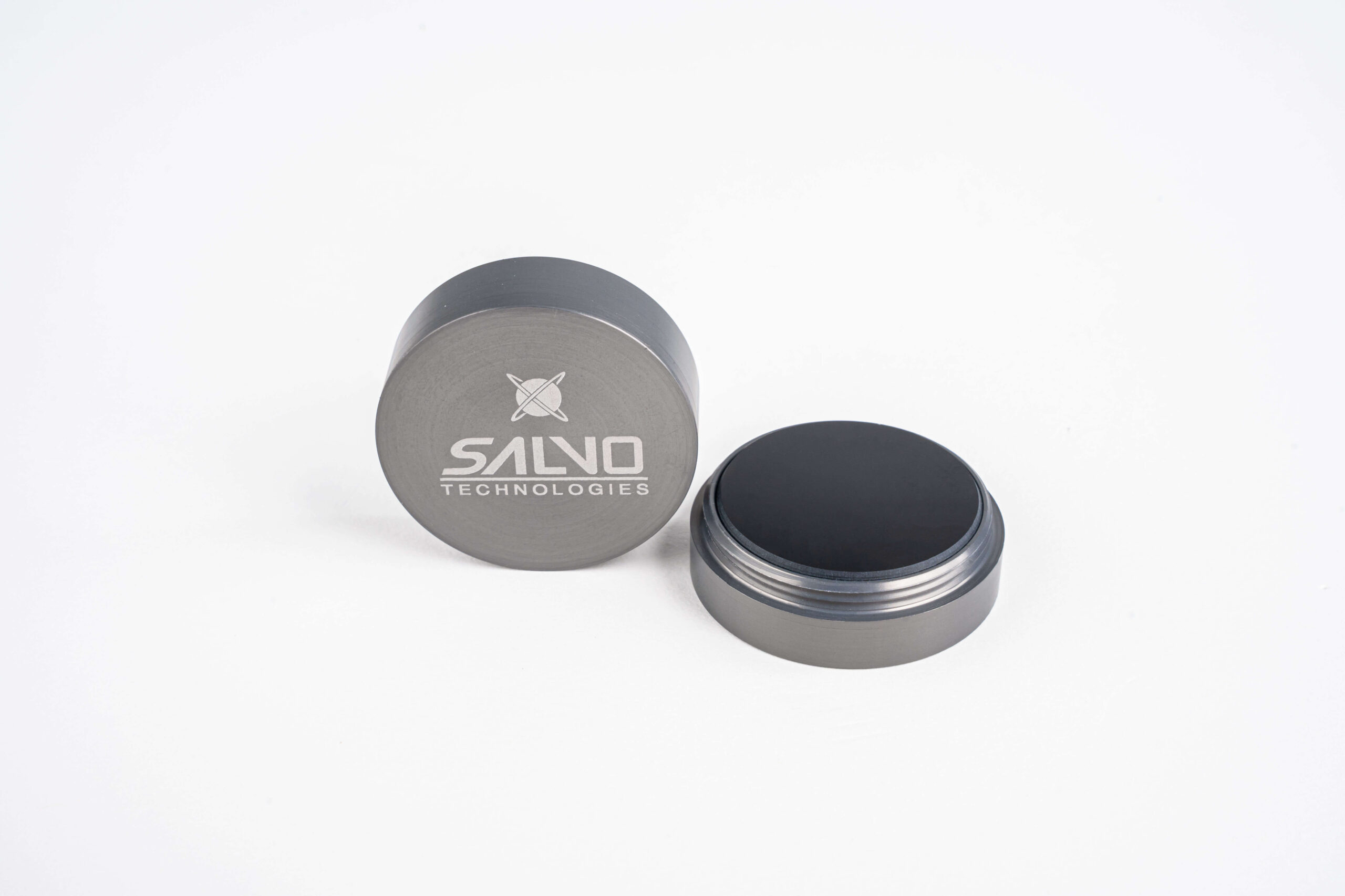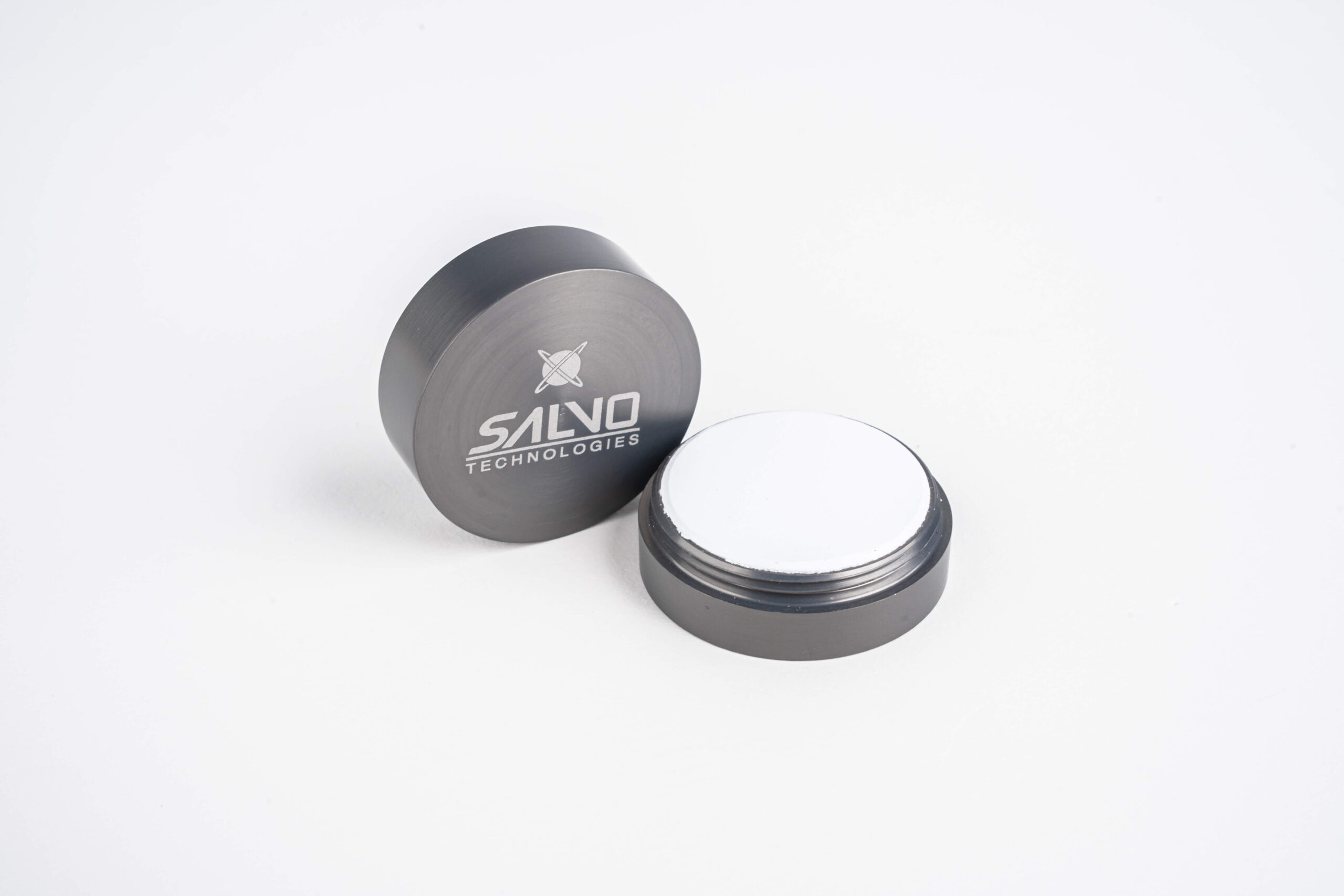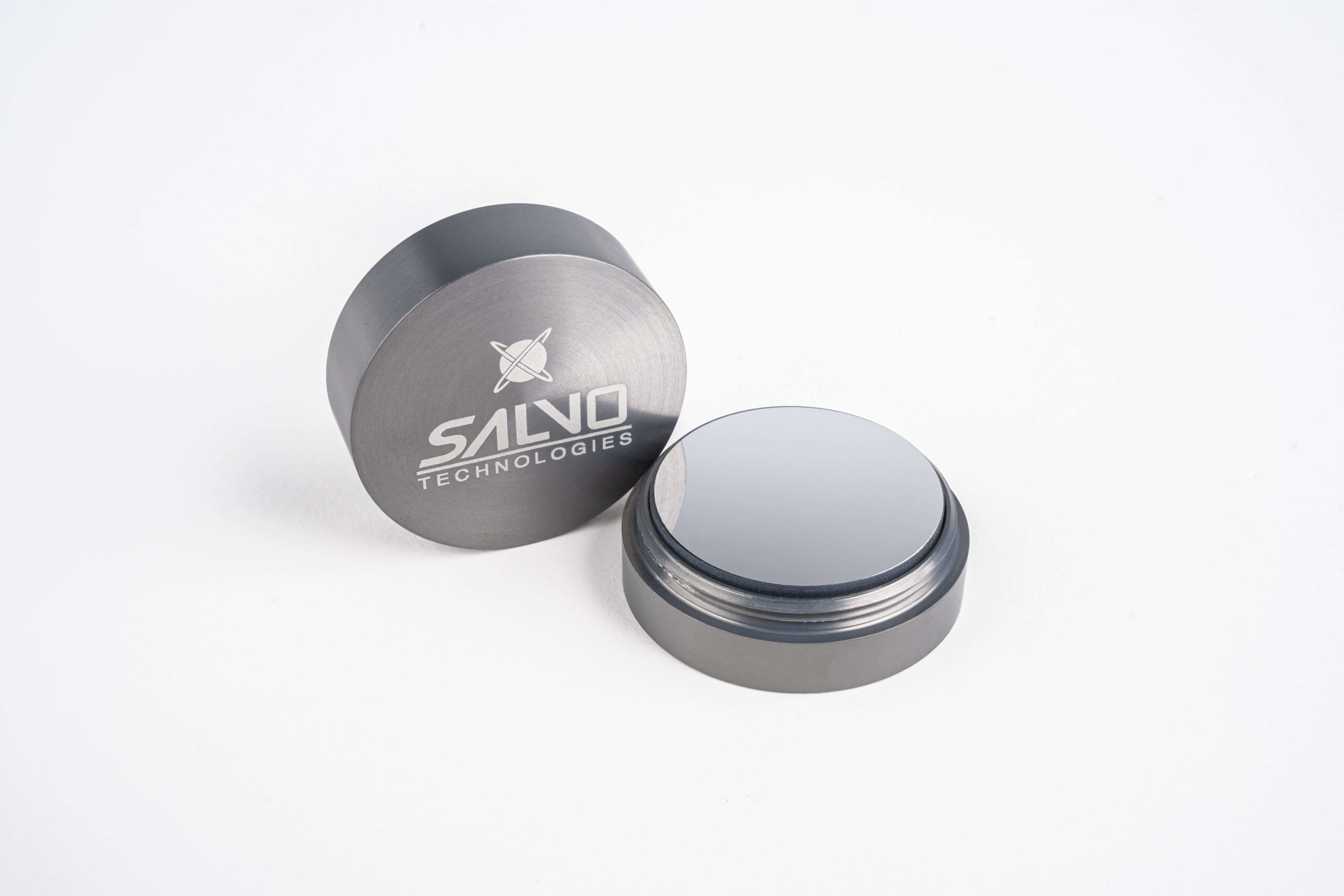Reflectance Standards









Salvo Technology manufactures reflectance standards for a wide range of applications. These filters enable laboratory staff to record accurate reflectance measurements for the most precise assessments and comparisons. We offer low-reflectivity and high-reflectivity options for use with anti-reflective or shiny surfaces.
Versatile Tools for Reflectance Measurement
The reflectance standards available are ideal for reflectance measurements. Use these standards to identify a surface’s color and texture for organization or quality control. The standards are durable and easily interchangeable for dependable efficiency in numerous applications.
Two distinct options allow laboratory technicians to measure surfaces with high or low reflective values. Both editions reflect wavelengths across a vast portion of the spectrum, including ultraviolet (UV), visible (VIS), near-infrared (NIR), and short-wave infrared (SWIR) light. The specular standard with high reflectivity provides reflectance between 80% and 98%, while the specular reflectance standard with low reflectivity reflects roughly 4%.
Our reflectance standards are beneficial for laboratory technicians in numerous industries. These standards feature durable materials. Our low-reflectivity specular reflectance standard comprises black glass, while the high-reflectivity specular reflectance standard features fused silica. These materials can withstand frequent use while maintaining optimal performance with occasional calibrations.
Additionally, these standards offer the versatility lab technicians need for multiple applications. Each standard responds to light between 250 and 2,400 nm with moderately variable reflectivity.
Ultimately, our reflectance standards provide the performance testers expect. These standards lend themselves to the most accurate surface color or texture measurements. Your staff can assess and compare surface qualities with absolute precision.
Our reflectance standards find use in numerous industries, including food, painting, defense, security, cosmetics, waste management, and paper and printing.
Some of the most common applications include:
- Testing paper quality.
- Differentiating between matte and gloss paints.
- Measuring a coating’s condition or presence.
- Assessing the surface quality of fruit.
- Identifying plastics for recycling and disposal.
- Testing infrared sensors.
- Testing and detecting camouflage.
Salvo Technologies manufactures and delivers reflective standards quickly and at an affordable price. Our team is available to help you determine the best standard for your application or better understand the uses of our standards.

The STAN-SSL Low-reflectivity Specular Reflectance Standard is a black glass standard that can be used as a reference when measuring surfaces with low specular reflectance values, such as thin film coatings, anti-reflective coatings, blocking filters, and substrates. The coated surface of the STAN-SSL provides an ~4.0% reflectance across the 200-2400 nm wavelength range.
The STAN-SSL substrate measures 1.25″ in diameter and are housed in a sturdy 1.5″ x 0.75″ blue anodized aluminum enclosure and protected by a screw-on top.
- The use of the STAN-SSL is limited to 200-2400 nm.
- Use the STAN-SSL to set a low-reflectivity reference of ~4%.
- Although black glass is a durable substrate, the user should handle it carefully to maintain its calibrated surface integrity.
- First, remove dirt and dust by blowing them off with pressurized gas to clean the STAN-SSL surface. Then use the drag method of cleaning to remove fingerprints and residual contaminants. In the drag method, lens tissue saturated with reagent-grade isopropyl alcohol or acetone is slowly dragged across the surface. Done correctly, the solvent will evaporate uniformly with no streaking or spotting.
Reflectance standards are ideal tools in any application where it is necessary to measure how a surface absorbs or reflects light and the angle at which the light reflects. Each standard serves a specific purpose when measuring reflectance:
Low-reflectivity specular reflectance standard: Measure dull, low-reflectivity surfaces like anti-reflective coatings, thin film coatings, and blocking filters or substrates.

The STAN-SSH High-reflectivity Specular Reflectance Standard is a mirrored, fused-silica standard that can be used as a reference when measuring surfaces with high specular reflectance values, such as optical substrates, optical coatings, machined metals, and semiconductor materials. The STAN-SSH provides an ~80-90% reflectance across the 250-800 nm wavelength range and an ~85-98% reflectance across the 800-2400 nm range.
The NIST-traceable STAN-SSH-NIST is calibrated to a NIST master with approximately 1.0% accuracy from 250-2400 nm). With the shipment of the NIST-traceable version, the customer will receive a certificate of calibration, a data sheet with the reflectance values as a function of wavelength, and a diskette that contains calibration data that can be transferred to a Spectrometer Operating Software.
A periodic recalibration of the STAN-SSH-NIST is recommended. We offer a recalibration service (STAN-SSH-RECAL). A recoat and calibration service is offered if the calibrated surface becomes corrupted.
The STAN-SSH substrate measures 1.25″ in diameter and is housed in a sturdy 1.5″ x 0.75″ blue anodized aluminum enclosure and protected by a screw-on top.
- The use of the STAN-SSH is limited to 250-2400 nm.
- Use the STAN-SSH to set a high-reflectivity reference.
- Although the STAN-SSH aluminum coating is protected with a proprietary overcoat, the user should handle the standard with care to avoid corrupting the integrity of the calibrated surface. Hands or objects should not touch the surface to avoid contaminating or damaging the surface.
- To clean the STAN-SSH surface, remove dirt and dust by blowing it off with pressurized gas. Then use the drag method of cleaning to remove fingerprints and residual contaminants. In the drag method, lens tissue saturated with reagent-grade isopropyl alcohol or acetone is slowly dragged across the surface. Done correctly, the solvent will evaporate uniformly with no streaking or spotting. Bare metallic coatings are delicate and cannot be cleaned in this manner. Dirt and fingerprints will permanently damage a bare metal-coated mirror, so a user should handle the STAN-SSH carefully to prolong the life of the coating.
Reflectance standards are ideal tools in any application where it is necessary to measure how a surface absorbs or reflects light and the angle at which the light reflects. Each standard serves a specific purpose when measuring reflectance:
High-reflectivity specular reflectance standard: Measure optical substrates or coatings, semiconductors, machined metals, and other shiny subjects.